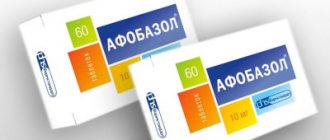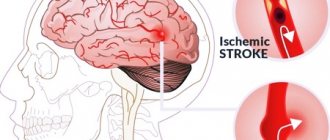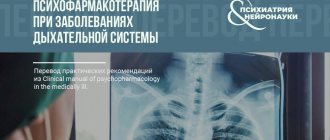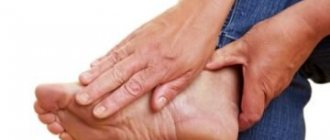A panic attack is a very strong and unbearable attack of fear and anxiety that occurs suddenly and is accompanied by various vegetative symptoms. Often develops at night, but often occurs during the day. Middle-aged people and, as a rule, females are more susceptible to this condition. Panic attacks greatly impair the quality of life, so you need to be able to deal with them.
What is a panic attack
Feelings of wild fear, excitement and anxiety are all symptoms of a panic attack.
According to statistics, this phenomenon is very common. This condition occurs throughout the world, affecting about 1-2% of the total population. Of these, the majority are women; attacks are less common in children and the elderly.
The causes of the attack can be various disorders, including some serious diseases.
This painful condition manifests itself in the form of a single sign or a series of symptoms. The duration of the phenomenon ranges from 10 minutes to 2 hours or more. In the latter case, there is no way to do without the help of a specialist.
VSD exacerbation, neurosis...
Ekaterina, Moscow
6771 views
November 23, 2020
Good evening, dear doctors. I am asking you for advice, because the district clinic refused to issue a referral to a neurologist, citing the pandemic... all that remains is to crawl back. I have VSD and am hypotensive, working pressure is 90/65, and tachycardia, pulse at rest is approximately 85. A week ago, osteochondrosis (chronic in the cervical and thoracic region) worsened. Or rather, I thought so... There is no obvious pain in the back (as happened before). But my head is terribly dizzy, or more precisely, it’s not dizzy, but moving. There is a sharp reaction to all sharp sounds and light. It all started with stress about 1.5 weeks ago. The night after the stress I couldn’t sleep, my blood pressure dropped to 80/54. My arms and legs were icy, and I was shaking all over, pounding inside, tremors in my hands. You fall through in a dream and are thrown back out of sleep with terrible tachycardia, it was very scary. And then everything went like clockwork. My stomach hurt, I urgently had a gastroscopy and colonoscopy, and my gastritis worsened. A bad blood test came back: Bilirubin 37, Hemoglobin 149, Cholesterol 7.8. I went on a diet. And my condition began to deteriorate sharply. The local therapist recommended a standard set for chondrosis, namely Costarox + Neuromultivit IM + Cerebrolysin 5 ml IM + Amelotex ointment. And of course Mydocalm 125 2 rubles per day + Omeprazole. This scheme helped me before. This time everything went wrong. Mydocalm just made me crawl, feel sick, my head felt like it was under water. I lasted 3 days, couldn’t drink anymore, stopped drinking, although my head cleared up. So far the rest of the treatment is of no use. Cerebrolysin causes an eerie ringing in the ears, and all sounds become aggravated. My hands and feet are constantly icy, attacks of dizziness are accompanied by some kind of hot flashes. It’s simply impossible to eat, nausea. And then I decided to drink Afobazol... and a miracle: my stomach begins to let go, it straightens up as if it were something, my back lets go a little, the warmth comes straight out. On the contrary, from injections there is a feeling of burning, burning and tingling. This makes me doubt that this is real neuralgia - but if afobazole helped for the first 4 days, now everything has returned to a pinched state again, with regular use. Feeling good after a warm bath, everything is warm, the head clears, but not for long, about 40 minutes. And again dizziness, nausea, and an unsteady gait sets in with hot flashes. Vessels have always been a weak point. Please tell me an adequate treatment regimen for neurosis, based on low blood pressure (all muscle relaxants make the condition even worse). And Afobazole, by the way, normalizes blood pressure and the pulse is noticeably lower. I am sure that the back pain is neurological in nature. Once upon a time, I was prescribed Sirdalud, Grandaxin - they generally make me feel terrible, panic, fear... I don’t even know how I can relax my back muscles, and most importantly, get rid of dizziness. I have an active life, I have a small child, I don’t sit still. And now I feel like a vegetable (not in my body, but from the outside). unpleasant and scary feeling. Neurosis is my guess, there is no one to diagnose...
The question is closed
VSD
Neurosis.
bad condition
Causes of a panic attack
In the development of a panic attack, it is customary to distinguish 3 main factors: biological, physiological and psychogenic. In practice, combinations of several reasons are often encountered, when one factor is the main one and the other is secondary.
As a rule, sudden anxiety occurs against the background of mental illness. But besides this, attacks appear as a result of the following reasons:
- The period before and after childbirth.
- The time of bearing a child.
- The onset of menopause.
- Taking certain groups of medications.
- Tumor formation of the adrenal glands.
- Prior myocardial infarction.
- Ischemic heart disease.
- Early sexual life.
Obsessive states of anxiety and excitement can also appear as symptoms of certain pathologies:
- Depressive state.
- Various phobias.
- Diseases associated with the development of any hallucinations.
- Mental disorders arising from certain injuries after an accident.
- Obsessive-compulsive disorder is characterized by a constant feeling of fear of something. As a result, a person experiences obsessive actions that he repeats often and regularly.
Advantages
1. Dorozhenok I.Yu., Terentyeva M.A. Afobazole in the treatment of anxiety disorders in dermatological hospital patients. RMJ. 2007. Butko D.Yu., Davydov A.T. and others. Experience in diagnosing and treating anxiety disorders in the post-stroke period in patients who have suffered an ischemic stroke. RMJ. 2008. Medvedev V.E. Therapy of anxiety and depressive disorders in therapeutic patients. Psychiatry and psychopharmacotherapy named after. P.B. Gannushkina, 2015. Pogosova N.V. et al. Clinical and epidemiological program for studying psychosocial risk factors in cardiological practice in patients with arterial hypertension and coronary heart disease (COMETA). Cardiology. 2021.
2. Ivanov SV. The range of use of modern anxiolytics in psychiatry and general medicine (systematic review of clinical studies of the selective anxiolytic afobazole). Effective pharmacotherapy. Neurology and psychiatry. 2012;3:1-8.
3. Instructions for medical use of the drug Afobazol, tablets, 10 mg, LS-000861 + Seredenin S.B., Voronin M.V. Neuroreceptor mechanisms of action of afobazole. Experimental and clinical pharmacology 2009, No. 1, T.71. — P. 3-12, 19-22.
4. Instructions for medical use of the drug Afobazol, tablets, 10 mg, LS-000861.
5. Instructions for medical use of the drug AFOBAZOL RETARD, extended-release film-coated tablets, 30 mg, LP-006555.
6. RU 2694837 - Long-acting pharmaceutical composition based on 5-ethoxy-2-[2-(morpholino)-ethylthio] benzimidazole dihydrochloride and/or base (Afobazole).
7. Patent for invention of the Russian Federation No. 2061686, no analogues are registered.
8. An open, non-comparative study of the effectiveness and tolerability of Afobazole, involving 30 patients (12 men and 18 women, aged 20-63 years) with non-organic sleep disorders. Yastrebov D.V., Mikhailova O.I., Kostycheva E.A. Use of the drug Afobazole for sleep disorders in patients with anxiety disorders. Psychiatry and psychopharmacotherapy. 2013, T.15, No. 5
9. An open comparative non-randomized study of the effect of Afobazole on psychosomatic manifestations of anxiety, involving 60 patients (30 men and 30 women, aged 18-55 years) who experienced emotional stress and suffered from neurotic disorders with severe symptoms of autonomic dystonia. Akarachkova E.S., Shvarkov S.B., Mamiy V.I. Afobazole in the treatment of autonomic manifestations of anxiety and maladjustment in neurological and general somatic patients. RMJ. 2007. volume 15, no. 2, pp. 100-106.
10. An open controlled study of the effectiveness of Afobazole, involving 48 patients (39 women and 9 men, aged 45-68 years), with chronic cerebral ischemia stage I-II and anxiety. Sholomov I.I. et al. The effectiveness of Afobazole for anxiety disorders in patients with chronic cerebrovascular insufficiency. Journal of Neurology and Psychiatry. S.S. Korsakov. 2008. – T.108, N 6. – P. 75-77
11. Medvedev V.E et al. Psychopharmacotherapy of anxiety disorders in patients with cardiovascular diseases: the use of Afobazole. Journal of Neurology and Psychiatry, 2007 – No. 7. – pp. 25-29.
12. Statistically significant improvement in sleep in the Afobazole group according to the VAS test, Kalinina S.Yu. et al. The effect of the anxiolytic Afobazole on the effectiveness of treatment of hypertension in elderly women. Review of Psychiatry and Medical Psychology named after. Bekhtereva No. 4 2009
13. Improved sleep quality. Tatarsky B.A., Biserova I.N. Treatment of paroxysmal atrial fibrillation: the use of anxiolytics. Directory of a polyclinic doctor, 2007 - No. 9. – P.28.32
Contributing Factors
In addition to the main causes of a panic attack, there are also provoking factors. They increase the likelihood of developing the disorder even in completely healthy people.
These factors include:
- Low physical activity. Leads to the emergence of various negative thoughts and high impulsiveness. Physical inactivity is especially dangerous for teenagers.
- Excessive caffeine consumption. Contributes to low levels of emotional exhaustion.
- Smoking and alcoholism. They have a negative effect on blood vessels and reduce resistance to stress and depression.
- Sleep disorder, when a person is often in a state of lack of sleep.
- Emotional poverty. Holding thoughts and emotions inside for long periods of time often leads to anxiety attacks.
Symptoms of a panic attack
The condition of a panic attack is manifested by a number of symptoms, which are divided into mental and physical. As a rule, they occur in conjunction with each other when an obsessive state occurs.
Mental symptoms include:
- Wild fear, a feeling of fear for life and health.
- Feeling of excitement and anxiety, so as not to go crazy.
- Lump in throat.
- Disturbance of consciousness.
- Perception of the world around us changes.
- Dry mouth.
- Fear of death - lasts for the first few minutes, after which it is replaced by fear of a heart attack, serious illness, stroke, and more.
People try to protect themselves from negativity, run away or hide somewhere, or fall into numbness.
Such clinical signs may manifest differently in each person. Some symptoms are more pronounced, others hardly occur.
As a rule, such phenomena occur on average once a week. But they may be absent for a month. Moderate attacks are frequent, up to 3-5 times a day.
Physical signs of panic include:
- Chills alternating with fever. It is considered a consequence of the contraction of blood vessels itself against a background of anxiety and excitement.
- Frequent breathing, even shortness of breath.
- Increased sweating.
- Stool disorder, characterized by the appearance of diarrhea or constipation.
- Pain in the sternum area.
- Cold extremities.
- Hand tremors and trembling throughout the body.
- Dysfunction in the digestive tract. Manifests itself in the form of nausea, vomiting, pain in the epigastrium.
- Severe weakness, dizziness.
- Poor consciousness, in rare cases fainting is possible.
High heart rate. During a panic attack, the heart beats so fast that you can hear a roar in your ears and feel as if it is about to jump out.
Panic attacks in neurological practice
The term “panic attack” is often used in somatic medicine and neurology; almost every doctor has one or another idea about it, which is associated with the frequent occurrence of this phenomenon - the lifetime prevalence of PA in the general somatic network is 22.7% [1]. However, as practice shows, the understanding of this phenomenon often remains insufficiently clear. In some cases, PA is regarded as a serious somatic or neurological pathology (stroke, transient ischemic attacks, attack of bronchial asthma, myocardial infarction, etc.) [1]. In other cases, correctly diagnosing panic disorder, the doctor is in a difficult situation - within the framework of which disorder to consider this symptom complex: most often the diagnosis is “panic disorder”, which does not always coincide with reality. Even with correct verification of the condition, problems may arise in terms of further therapeutic tactics for managing this patient (this occurs especially often in cases of prescription of a serotonergic antidepressant, to which the patient reacts negatively during the first days of use). Due to the continuing relevance of the problem, the article examines the general clinical characteristics of PA and the prerequisites for their formation, individual variants of this symptom complex, which are a common reason for visiting a neurologist, as well as PA within the framework of comorbid mental pathology in neurological patients and features of the treatment of these conditions. To diagnose PA, it is convenient to use the DSM-4 criteria [2].
Diagnostic criteria for panic attack
A well-defined period of marked fear or discomfort accompanied by at least 4 of the following symptoms, which appear suddenly and reach their peak within 10 minutes: 1. Palpitations, palpitations, palpitations, or increased heart rate.
2. Sweating. 3. Shaking or chills. 4. Feeling of shortness of breath or lack of air. 5. Feeling of suffocation. 6. Pain or discomfort in the chest. 7. Nausea or discomfort in the stomach. 8. Feeling dizzy or unsteady. 9. Derealization (feeling of the unreality of what is happening) or depersonalization (alienation from oneself). 10. Fear of losing control or going crazy. 11. Fear of dying. 12. Paresthesia. 13. Waves of heat or cold. PA is an inexplicable, painful for the patient, unexpectedly occurring and quickly, within a few minutes, growing attack of poor health, accompanied by fear or anxiety, and/or a feeling of internal tension in combination with various vegetative (somatic) symptoms. Four or more of the 13 listed panic-associated symptoms must be present. The criterion of having at least 4 symptoms from the list is not absolutely rigid. As a rule, patients, along with “full-scale” attacks, experience frequent attacks limited to 2-3 symptoms (“minor PA”). In some cases, PA may be accompanied by a pronounced feeling of fear, indescribable horror, in others – unpleasant/unusual physical sensations come to the fore, and there is a clear internal tension (according to one patient’s apt description of this phenomenon: “there is a feeling that the whole body is mobilizing” ), while there may not be a pronounced feeling of fear. In this case, we talk about non-insurance PA (“panic without panic”). An example of a non-insurance PA. A 39-year-old man, a programmer by profession, was overweight, did not follow a work-rest schedule (staying late at work or playing computer games), and was initially characterized by poor endurance for long-term stress, increased fatigue, and disorganization. In the summer, the patient was in a state of nervous tension for a long time: he had to fulfill many work orders, there was not enough time, he sat at the computer, did not rest, and at the same time experienced psychological pressure from his wife, who reproached him for insufficient help with the housework. It was very hot. One day, a patient who was in a stuffy room at work suddenly felt sick, dizzy, had palpitations, sweating, a feeling of unreality in the surroundings (perceived blurry), could not remember his wife’s name, could not find the right words, there was a feeling that they have faded from memory. Fear about this unusual condition was present, but did not come to the fore in the clinical picture, which included general lethargy, speech impairment, complaints of dizziness, and a feeling of loss of reality of what was happening. With these complaints, the patient was hospitalized in the neurology department with suspected acute cerebrovascular accident. A thorough examination (including MRI of the brain) did not reveal any pathology. The patient was discharged in satisfactory condition with a diagnosis of transient ischemic attack. A few days after discharge from the neurological hospital, in a stuffy room, the attack described above was repeated: dizziness, increased heart rate, and a feeling of loss of sense of reality that persisted for 30 minutes. Upon repeated consultation with a neurologist, this condition was classified as PA.
PA does not have a period of precursors; PA develops suddenly and, as a rule, reaches its peak within 10 minutes. The duration of PA is calculated in minutes - on average 15-30 minutes, although some patients report longer attacks. The variety of symptoms and variety of clinical manifestations in PA are due to the fact that by their nature they are vegetative sympathoadrenal crises (normally occurring in severe stressful life-threatening situations), triggered by activation of the adrenal cortex and the subsequent release of a large amount of adrenaline and glucocorticoids into the general bloodstream. Initially, the main goal of this ancient reaction, which is protective in nature, is aimed at mobilizing the internal forces of the body, as a result of which the individual develops incredible abilities to protect (defense) or escape [3]. This phenomenon is realized by increasing the frequency and strength of heart contractions, dilating bronchioles and deepening breathing (for greater oxygen saturation of the blood), redistributing blood flow (outflow of blood from the skin and internal organs, inflow to skeletal muscles and the brain). Clinically occurring changes can be expressed in the occurrence of the unpleasant/unusual bodily and mental sensations listed in Table 1 accompanying panic and cause a feeling of fear and concern for one’s physical and mental well-being. The most frequent and constant bodily sensations in the structure of the attack are disturbances in cardiac activity (irregular heart rhythm, discomfort in the left half of the chest or pain in the heart). Cardiac and other physical signs of panic are usually assessed by patients as the main and leading manifestation of the disease, while anxiety and fears are often ignored. When patients experience panic attacks, depending on the prevailing panic-associated symptoms, they most often seek help from appropriate specialists (cardiologists, neurologists, pulmonologists, gastroenterologists). Neurologists come to the attention of patients in whom, during the period of PA, tremors, discomfort and a feeling of numbness in the limbs, clouding of consciousness with loss of a sense of reality and a violation of one’s own perception, a feeling of dizziness and instability come to the fore in the clinical picture. These patients often experience severe anxiety and fear for their health, suspecting they have serious illnesses (epilepsy, brain tumor, stroke). The present emotional disturbances are assessed by the patients themselves as an adequate response to the disease. PAs are divided into situational (occur in certain situations that are uncomfortable for a particular patient: when traveling on the subway, contact with an animal, public speaking, etc.) and spontaneous (develop for no apparent reason). Nevertheless, it has been established that spontaneous PAs most often develop as a result of objective stress (against the background of long-term persistent debilitating psychophysical factors: lack of sleep, exhausting stress, being in an interpersonal conflict). A striking example of spontaneous PA that developed against the background of a protracted stressful situation is the case of a 42-year-old patient, who had panic attacks against the background of complete, as it seemed to her, well-being. During a conversation with the doctor, the patient said that everything was fine with her: she had a loving husband, a good job, and they had recently moved to a new comfortable apartment. Meanwhile, it turned out that the patient does not have children, she will soon have to undergo a repeat IVF procedure, and there is a high probability of failure of this procedure.
PAs can be triggered by alcohol intake, especially a hangover. Biologically, PA can be caused by inhaling air with a high content of carbon dioxide or frequent breathing. PAs can occur at any time of the day; there are conditions in which attacks occur exclusively at night. The frequency of PA can vary from several attacks during the day to 1-2 attacks during the year or less. PAs are not specific to any particular disease and can occur in the structure of various mental disorders. A single occurrence of PA cannot be considered as part of the disease and is often a natural reaction to stress (develops when exposed to a life-threatening situation: for example, a driver who suddenly discovered that a truck was rushing towards him at high speed). It should be taken into account that vegetative crises can occur in patients with a drug addiction profile both during periods of abstinence from psychoactive substances and at the height of intoxication with paradoxical reactions and overdose. Conditions similar to PA can occur with endocrine diseases (pathology of the thyroid gland, adrenal tumor, pancreatic tumor, etc.); conditions after extensive burns and massive surgical interventions; pathologies of the central nervous system: tumors, epilepsy, disorders of the vestibular apparatus, etc.; diseases of the heart and lungs, accompanied by cardiac arrhythmias, attacks of suffocation, difficulty in breathing). In addition to direct treatment for panic attacks among neurological patients, PA is most often observed in the structure of neurological, stress-related and somatoform disorders concomitant with neurological pathology (such as panic disorder, specific phobias, generalized anxiety disorder, obsessive-compulsive disorder, post-traumatic stress disorder ). However, as practice shows, in a number of cases, neurologists have to deal with mental disorders of a more severe register - endogenous depression and psychotic states within the framework of delusional schizophrenia, in the structure of which PA occurs.
Panic disorder
(PD) is one of the most well-known diseases in the clinic of which PA occurs, although the lifetime prevalence of PR is 1.2% [4]. The main symptom of PD is repeated attacks of severe anxiety (panic), which are not limited to a specific situation or circumstances and are therefore unpredictable. Another important criterion is the presence of anxiety or fear that these attacks will recur and cause catastrophic consequences; or there is a pronounced change in behavior (patients refuse to stay alone at home or, conversely, are afraid to leave the house for fear of being trapped, insecure, or losing control of the environment). For a reliable diagnosis, it is necessary that at least 2 severe attacks of autonomic anxiety occur over a period of about 1 month. under circumstances not related to an objective threat; attacks should not be limited to known or predictable situations; between attacks the state should be relatively free of anxiety symptoms (although anticipatory anxiety is common).
Clinical case of transport phobia. A 50-year-old patient consulted a psychotherapist about difficulties getting to work due to his fear of riding public transport during rush hours. When placed in a situation where there were a large number of people present and there was a possibility of being stuck in a traffic jam, the patient began to worry that he might develop a life-threatening condition (heart attack or stroke) and would be without access to medical care. The patient did not use the metro or his own car on weekdays, and only drove on weekends, carefully searching for routes without traffic jams. The road to work was carefully planned; I traveled exclusively by minibus, carrying bottles of Corvalol and Valocordin with me. The most frightening section for the patient was the overpass: he was always very worried when a minibus passed it - he took a small amount of medicine when entering the overpass, then again in the middle of the overpass. It was especially scary to get stuck in a traffic jam; I developed an action plan for myself, how if a bus got into a traffic jam, he would immediately get out of it and move toward work on foot. For this reason, I always tried to stay close to the door on public transport. For the first time, the discomfort of riding in transport arose about 23 years ago, during this period the patient was in an uncomfortable situation related to work, he did not want to go there (“his legs could not bear it”), and he often abused alcohol. One morning, while traveling to work on the subway and in a state of hangover, the patient suddenly felt ill, had palpitations, began to choke, and became dizzy. Since then, I began to fear the repetition of such attacks. I stopped riding the subway, and subsequently experienced discomfort when on other types of transport. I applied for a consultation due to a possible change of place of work, which could only be reached by underground transport. Simple (specific) phobia
(the lifetime prevalence of this condition is 4.9% [2]) is the fear of one specific stimulus or situation (fear of animals, fear of spiders; fear of blood, injections, damage; fear of illness; fear of natural phenomena (heights, water); fear of closed spaces). The patient understands that his anxiety is unfounded, but prefers not to fight it, but to avoid frightening stimuli, even if such avoidance and the anxiety that arises in connection with it interfere with normal life activities and cause significant discomfort. During contact with an unpleasant stimulus or in anticipation of this contact, anxiety can reach a high degree, up to the development of panic attacks (PAs are situational in nature). In contrast to PR, in this disease patients are afraid not so much of a repetition of PA, but rather of encountering an unpleasant stimulus.
Social phobia
(social phobia (SF), the lifetime prevalence of this disease is 2.5% [2]) is a constant intense situational (for example, during public events, performances) state of anxiety that occurs in the presence of strangers or when attracting the attention of others .
Patients are either afraid of being funny or humiliated, or they are afraid of their own embarrassment and constraint. They prefer to avoid such situations, but if this fails, then painful sensations do not leave such patients. In cases of SF, anxiety should not be caused by an objective condition (for example, not being able to cope with a lecture due to stuttering). In severe cases, there is a generalized type of SF, in which anxiety occurs in most situations of communication with people. In cases of SF, panic attacks occur before social situations. Obsessive-compulsive disorder
(OCD) is characterized by thoughts, images, ideas or actions (neutral or unpleasant painful content) that arise against one’s will, often contradicting the entire essence of the patient, while realizing their painfulness.
PAs in OCD are situational in nature and associated with painful experiences. An example of OCD with contrasting obsessions. A 32-year-old patient complained of panic attacks with a feeling of severe palpitations, difficulty breathing, and discomfort in the body, for which she underwent a thorough neurological examination. No pathology other than dysfunction of the autonomic nervous system was established. As a result of the questioning, it turned out that the indicated attacks occur in the patient at the height of anxious experiences, which are caused by emerging thoughts - contrasting with her essence - of harming her dearly beloved child (for example, when looking at a knife on the table, the patient had thoughts of hitting the child with a knife; near an open windows, thoughts arose of throwing the child out the window, etc.). The patient was afraid of losing control over herself, not being able to cope with the situation, and committing a negative act that was contrary to her true aspirations. Post-traumatic stress disorder (PTSD)
develops in response to psychotraumatic extreme exposures in which a person is a participant in or witness to events involving severe injury, death or threat of death, or a threat to himself (for example, combat, rape);
at the same time experiencing extreme fear, anxiety, and helplessness. Some time after such events, pathological manifestations arise associated with memories of experienced events. They cause severe discomfort and disruption of life. A psychotraumatic event is a subject of constant worry. Characterized by constant avoidance of stimuli associated with trauma, as well as a number of general manifestations in the form of decreased interest, withdrawal, detachment, emotional dullness, feelings of gloom, hopelessness. Constant signs of increased excitability (absent before the injury) are revealed, such as: difficulties falling asleep and maintaining sleep, irritability or outbursts of rage, impaired concentration, increased alertness, enhanced quadrigeminal reflex. All of the above symptoms must be observed for at least 1 month. In PTSD, PA can be triggered by the resurfacing of painful memories and other stimuli associated with severe mental trauma. Generalized anxiety disorder (GAD)
. The lifetime prevalence of this disease is 6.2% [2]. GAD is characterized by frequent and persistent fears and worries that arise about, but are apparently excessive in relation to, actual events and circumstances of concern to the person. For example, students often fear exams, but a student who is constantly worried about the possibility of failure, despite good knowledge and consistently high grades, can be suspected of GAD. To diagnose GAD, it is necessary to have excessive, difficult-to-control anxiety and restlessness (apprehension) occurring almost daily for 6 months. and more. Characterized by a feeling of nervousness, a state on the verge of a breakdown, fatigue, impaired sleep, irritability, muscle tension, sleep disorder (difficulty falling asleep, restless sleep, frequent awakenings). The direction of anxiety and concern is not limited to any one motive (as, for example, with PD, SF, specific phobias). Here, to put it figuratively, there is constant internal basic anxiety - the patient has just woken up, nothing has happened in his life yet, and he already notes excessive internal anxiety, a readiness for excitement. Any, even neutral, news can serve as a cause for alarm and concern. So, for example, a patient with GAD whose husband went on a business trip - she begins to worry about him, imagines pictures of a train crash, robbery, loss of tickets, etc.; Having learned cancer incidence statistics from a TV program, the patient begins to suspect that she has it, undergoes numerous examinations, receives negative results, and calms down a little for a while; however, later, upon learning that the son was late in class, he immediately begins to imagine hooligan disputes, road accidents, etc.
With GAD, anxiety, restlessness in combination with the other above symptoms cause significant discomfort and disrupt the patient’s life in social, professional or other important areas. PAs in the structure of GAD can arise at the height of anxious experiences. For example, when a patient who is worried about his health begins to think that he has cancer, his anxiety may increase and reach the point of panic. However, in the future, the patient will worry not about the repetition of PA, but about newly arising concerns regarding himself and loved ones. It should be noted that there is another form of neurotic diseases that often comes to the attention of neurologists and psychiatrists - this is a variant of somatoform disorders of conversion (hysterical) origin
, manifested by a complex of physical sensations that outwardly resemble PA, while the condition itself often imitates PR. In contrast to the latter, with the conversion genesis of the disease, the secondary benefit from the existing condition will always be clearly visible. Clinical case of somatoform disorder of conversion type. G., 34 years old, turned to a psychiatrist about her fear of riding the subway alone and moving through wide spaces (when the patient finds herself alone in these places, she begins to feel dizzy, she is afraid of falling, not having any support nearby to lean against in in case of faintness). This disorder first appeared 4 years ago on an escalator: suddenly there was severe weakness, I felt dizzy, my ears began to pop, and I was afraid of losing consciousness or falling. These sensations lasted for 2-3 minutes, which she could hardly stand on her feet. Since then, fearing a recurrence of similar conditions, she has been afraid to ride the subway alone. A little later, the fear of open, wide spaces came into play. The patient is distinguished by demonstrative character traits, “the soul of the group.” Works in a military unit. She got married at the age of 24 and remembers her first marriage as a nightmare period in her life: the relationship with her husband did not work out from the beginning - the husband was passive, did not help around the house, did not strive to earn money, the patient had to bear the entire burden of everyday life and work a lot. After 6 years, she left her husband for a co-worker, who turned out to be the exact opposite of her husband: he surrounded the patient with warmth, care and attention. If earlier she was forced to decide everything herself, now everyday problems were transferred to the shoulders of her newly-made husband. After reuniting with him, fear appeared. The spouses work in the same military unit, the work is close to home. G. goes to and from work accompanied by her husband or with one of her colleagues (many live nearby); in extreme cases, she can, as she puts it, “get home along the walls.” Previously, G. had already consulted a doctor for help; medications were prescribed that had some positive effect, but the patient stopped taking them for an unknown reason. The patient did not give the impression of being sick, exhausted by an illness. Despite her seemingly sincere desire to get rid of her fears, it was obvious that this was “unprofitable” for her - after 6 years of an unsuccessful life, her husband’s care and attention were too pleasant. Despite her vows to strictly follow the doctor’s recommendations, she very quickly disappeared from view.
In addition to the neurotic conditions described above (in the genesis of which external unfavorable psychophysical exogenous factors play a leading role), PA can also occur in the structure of endogenous mental disorders (which have a hereditary predisposition and occur according to internal patterns that have little dependence on external circumstances). These include depressive episodes within the framework of bipolar and recurrent depressive disorder, in the structure of which there is a pronounced anxiety component. Anxiety in such conditions can reach the level of agitation (when a person rushes about and cannot find a place for himself) and is accompanied by panic attacks. PAs here are of a secondary nature and arise against the background of a clearly expressed state of depression. PAs can also occur within the framework of delusional schizophrenia, during exacerbations, however, in this case, patients will uniquely describe them as demonic possession, the desire of dark forces to take possession of them, they often hear threatening auditory hallucinations during these periods, etc. Treatment
mental disorders in the structure of which PA occurs is determined by their register. However, regardless of the nosological affiliation, any PA can be easily treated with benzodiazepine tranquilizers. A rapid (within 5–10 min) reduction of autonomic manifestations of PA after sublingual administration of tablet forms of benzodiazepines can serve as a diagnostic criterion indicating the functional genesis of this condition (in differential diagnosis with hypertensive crisis and transient ischemic attack) [4]. The anxiolytic effect of the drug is due to the influence of bromodihydrochlorophenylbenzodiazepine on the amygdala complex of the visceral brain (limbic system). It manifests itself in reducing emotional tension, relieving anxiety, fear and worry. In terms of its anxiolytic properties, the drug is significantly superior to most other psychotropic drugs of the diazepine series. The drug has a general calming effect on the central nervous system, reducing the severity of reactions to external stimuli, psychomotor excitability, partly reducing daytime activity, reducing concentration, as well as the speed of mental and motor reactions, etc. To eliminate the possibility of addiction and the development of drug dependence, bromodihydrochlorophenylbenzodiazepine is prescribed in courses, the duration of which does not exceed 2 weeks. In some cases, the course can be extended to 2 months. The drug is discontinued by gradually reducing the dose. By regulating the function of the central nervous system, bromodihydrochlorophenylbenzodiazepine reduces the intensity of the effects of various kinds of vegetative, motor and psycho-emotional stimuli that affect the mechanism of falling asleep. In cases of endogenous diseases, priority is given to biological therapy: for unipolar depression, antidepressants are prescribed [5, 6]; in cases of depressive episodes as part of bipolar disorder, the basic drugs are mood stabilizers (anticonvulsants) or the atypical antipsychotic quetiapine; For the treatment of schizophrenia, the basic drugs are antipsychotics. In such situations, the drug of choice is alimemazine, which blocks the functional activity of dopamine and adrenergic and other receptors, due to which several therapeutic effects are realized, which include: - antipsychotic effect - reducing the severity of manifestations of acute psychosis; – sedative (calming) effect; – antiemetic effect; – antitussive effect; – hypnotic effect; – hypothermic effect – reduction of elevated temperature due to a direct effect on the thermoregulation center of the medulla oblongata. Therapeutic effects begin to appear within 15–20 minutes after taking the tablet, they persist for 6–8 hours. After taking the alimemazine tablet orally, the active ingredient is quite quickly and almost completely absorbed into the blood from the intestine. It is evenly distributed in tissues and penetrates the structures of the central nervous system through the blood-brain barrier. Alimemazine is metabolized in the liver to form inactive breakdown products, which are excreted primarily in the urine. Taking alimemazine is indicated for restoring the functional state of the central nervous system structures in various pathological conditions, which include: • Somatized mental disorders, which are manifested by feelings of discomfort from the internal organs. • Neuroses or neurosis-like conditions, which may have an organic or endogenous origin and manifest themselves as phobias (unreasonable fears), hypochondria (excessive worry about health), psychovegetative disorders, which are characterized by additional disturbances in the functional state of internal organs and the cardiovascular system. • Senestopathic depression is a long-term and pronounced decrease in mood, provoked by painful sensations in the area of internal organs or on the surface of the body. • Anxiety and depressive conditions provoked by deterioration of blood flow in the brain, organic or infectious pathology. • Psychopathy associated with asthenic or psycho-asthenic disorders (pronounced decrease in a person’s ability to work). • The appearance of excessive excitement or anxiety in various somatic pathologies. • Sleep disorders of various origins. For neurotic, stress-related and somatoform disorders, the priority treatment method is psychotherapy in combination with restoratives (physiotherapy, exercise therapy, massage). Social activities aimed at eliminating conflicts, mental and physical stress, and traumatic situations are of great importance. Psychopharmacotherapy is not carried out in cases where the disorder does not significantly affect the social functioning of patients. Treatment of mild forms of anxiety-phobic disorders is carried out in the form of short (1-2 weeks) courses using anxiolytics. Both benzodiazepine and non-benzodiazepine drugs can be used [7]. In more serious cases, which significantly affect life activity, the choice of psychopharmacotherapy is determined by the nosological affiliation. For panic disorder with agorophobia, FS, obsessive-compulsive disorder, PTSD, according to some authors, the first-line treatment is antidepressants from the group of selective serotonin reuptake inhibitors (SSRIs). If they are ineffective, it is recommended to switch to other antidepressants: selective serotonin and norepinephrine reuptake inhibitors (SNRIs), tricyclic antidepressants (TCAs), monoamine oxidase inhibitors (MAOIs), which are effective for social phobia [8]. Other authors initially recommend combination therapy, including antidepressants (TCAs, SSRIs, SNRIs) in combination with typical and atypical antipsychotics, with anxiolytics added if necessary [9]. In contrast to the above diseases, for GAD, the drugs of choice are anxiolytic drugs: benzodiazepine tranquilizers, pregabalin, buspirone. If there is no effect from the above drugs, SSRIs are prescribed in combination with benzodiazepines or TCA monotherapy [8]. Another method of treating GAD includes a combination of benzodiazepines with antipsychotics that affect somatovegetative symptoms (sulpiride, amisulpiride, quetiapine) [7]. In cases of hysterical-conversion disorders, acute conditions are treated with intravenous administration of anxiolytics. If hysterophobic manifestations are protracted, an antipsychotic is added to therapy. Treatment in a hospital should in no case be protracted or create the idea of a serious incurable condition [7]. When prescribing antidepressants, especially SSRIs, one should remember that they are often poorly tolerated in the first days of starting therapy, with a possible increase in anxiety, restlessness, and the ability to provoke panic attacks, even in those patients who have not previously experienced them. In order to avoid iatrogenicity, it is necessary during the first 2 weeks. SSRI therapy, if necessary, use tranquilizers to relieve excessive anxiety and restlessness. Thus, PAs represent a nonspecific reaction of the body to a stressful stimulus and can occur in the structure of various mental disorders [9]. Conditions similar to PA occur in somatic, neurological and drug addiction diseases. A broader understanding of the possible variants of diseases occurring with PA and the principles of their treatment will significantly improve the verification of these conditions and will make it possible to correctly determine treatment tactics.








